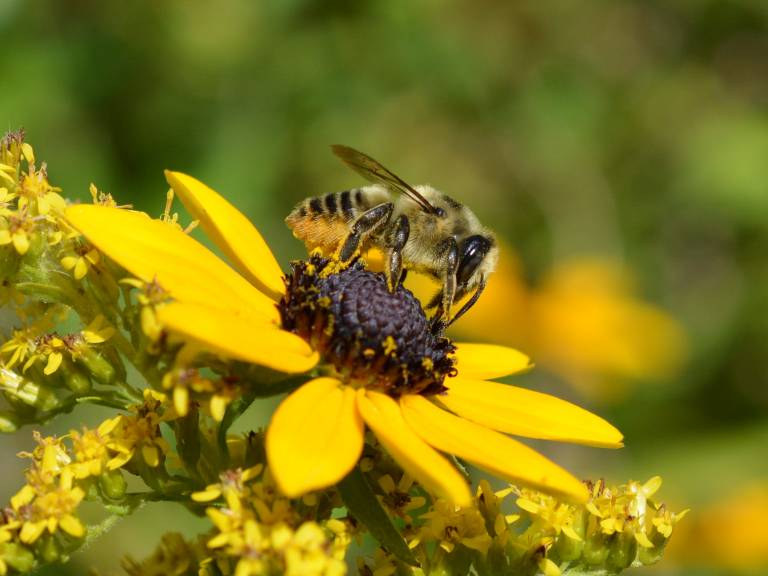Taung Child lived and died in dry savannah, suggested by the presence of 2.8 million year old Ground-nesting Carder Bees
4 October 2016
The Buxton-Norlim Limeworks southwest of Taung, South Africa, is renowned for the discovery of the first Australopithecus africanus fossil, the 'Taung Child'.
 The hominin was recovered from a distinctive pink calcrete that contains an abundance of invertebrate ichnofauna belonging to the Coprinisphaera ichnofacies. Here a tema of palaeontologists led by UCL Institute of Archaeology's Jennifer Parker describe the first fossil bee's nest, attributed to the ichnogenus Celliforma, from the Plio-Pleistocene of Africa. Petrographic examination of a cell lining revealed the preservation of an intricate organic matrix lined with the calcitic casts of numerous plant trichomes-a nesting behaviour unique to the modern-day carder bees (Anthidiini). The presence of Celliforma considered alongside several other recorded ichnofossils can be indicative of a dry, savannah environment, in agreement with recent work on the palaeoenvironment of Plio-Pleistocene southern Africa. Moreover, the occurrence of ground-nesting bees provides further evidence that the pink calcrete deposits are of pedogenic origin, rather than speleogenic origin as has previously been assumed. This study demonstrates the potential value of insect trace fossils as palaeoenvironmental indicators.
The hominin was recovered from a distinctive pink calcrete that contains an abundance of invertebrate ichnofauna belonging to the Coprinisphaera ichnofacies. Here a tema of palaeontologists led by UCL Institute of Archaeology's Jennifer Parker describe the first fossil bee's nest, attributed to the ichnogenus Celliforma, from the Plio-Pleistocene of Africa. Petrographic examination of a cell lining revealed the preservation of an intricate organic matrix lined with the calcitic casts of numerous plant trichomes-a nesting behaviour unique to the modern-day carder bees (Anthidiini). The presence of Celliforma considered alongside several other recorded ichnofossils can be indicative of a dry, savannah environment, in agreement with recent work on the palaeoenvironment of Plio-Pleistocene southern Africa. Moreover, the occurrence of ground-nesting bees provides further evidence that the pink calcrete deposits are of pedogenic origin, rather than speleogenic origin as has previously been assumed. This study demonstrates the potential value of insect trace fossils as palaeoenvironmental indicators.
Fossil Carder Bee's Nest from the Hominin Locality of Taung, South Africa
Jennifer F. Parker, Philip J. Hopley , Brian F. Kuhn
DOI:10.1371/journal.pone.0161198
 Close
Close

